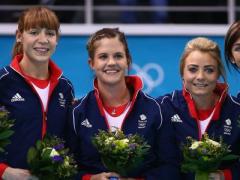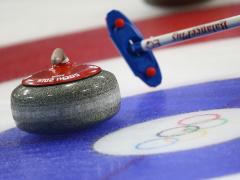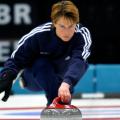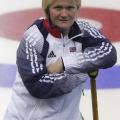Curling has been described as the “Roarin’ Game”, with the “roar” coming from the noise of a granite stone as it travels over the ice. The exact origins of the game, however, are unclear, but curling is widely believed to be one of the world’s oldest team sports.
Paintings by a 16th Century Flemish Artist, Pieter Bruegel (1530-1569) portrayed an activity similar to curling being played on frozen ponds. The first written evidence appeared in Latin, when in 1540, John McQuhin, a notary in Paisley, Scotland, recorded in his protocol book a challenge between John Sclater, a monk in Paisley Abbey and Gavin Hamilton, a representative of the Abbot. The report indicated that Sclater threw a stone along the ice three times and asserted that he was ready for the agreed contest.
What is clear, however, is that what may have started as an enjoyable pastime of throwing stones over ice during a harsh Northern European winter, has evolved into a popular modern sport with its own World Championships attracting fans and large television audiences.
Curling in its early days was played on frozen lochs and ponds. A pastime still enjoyed in some countries when weather permits, but all National and International competitive curling competitions now take place in indoor rinks with the condition of the ice carefully temperature-controlled.
It is also clear that the first recognized Curling Clubs were formed in Scotland, and during the 19th Century the game was “exported” wherever Scots settled around the world in cold climates, most notably at that time in Canada, USA, Sweden, Switzerland, Norway and New Zealand.
The first Rules were drawn up in Scotland, and they were formally adopted as the “Rules in Curling” by the Grand Caledonian Curling Club, which was formed in Edinburgh in 1838 and became the sport’s governing body. Four years later, following a demonstration of curling on the ballroom floor of Scone Palace near Perth by the Earl of Mansfield during a visit by Queen Victoria, the Queen was so fascinated by the game that in 1843 she gave permission for the Club’s name to be changed to the Royal Caledonian Curling Club (RCCC).
It is recorded that international curling events were staged in the 19th century in Europe and North America, but it was not until the first Olympic Winter Games at Chamonix in 1924 that any form of official International competition took place for men’s teams. Great Britain defeated Sweden and France in what was retroactively accepted in 2006 by the International Olympic Committee (IOC) as Curling’s Olympic debut, with medals awarded.
In 1959, Scotland and Canada reached a major milestone by launching the Scotch Cup series between their national men's curling champions.
Interest in other countries was generated, and the USA (1961), Sweden (1962), Norway and Switzerland (1964), France (1966) and Germany (1967) expanded the Scotch Cup entry. The 1959-67 results now are recognized in the curling history of the men's world championship.
The International Curling Federation (ICF) was established as of April 1, 1966.
In 1968, the Air Canada Silver Broom replaced the Scotch Cup, and it was sanctioned as the World Curling Championship. In 1975, the Federation endorsed the World Junior Men's Curling Championship; in 1979 the Ladies’ Curling Championship; and in 1988, the World Junior Ladies’ Curling Championship. The four events were combined into two in 1989 at Milwaukee, Wisconsin, and Markham, Ontario, and became known as the World Curling Championships (WCC) and the World Junior Curling Championships (WJCC).
In 1982 the ICF was declared an independent entity and approved as the governing body for curling in the world, while the Royal Caledonian Curling Club was acknowledged as the Mother Club of Curling.
In 1991, the name of the Federation was changed to the World Curling Federation (WCF).
Curling was a demonstration sport for a second and third time at the Olympic Winter Games of 1988 (Calgary) and 1992 (Albertville) for teams of men and women.
On 21 July 1992, at its session in Barcelona, Spain, the International Olympic Committee granted official medal status to Men’s and Women’s Curling, to take effect no later than the Olympic Winter Games of 2002, with an option for 1998 at Nagano, Japan.
During the meeting of the IOC Executive Board held June 22-23, 1993 in Lausanne, the Organizing Committee of the Nagano Olympic Winter Games (NAOC) officially agreed to include Curling in the programme of the XVIII Olympic Winter Games in 1998. Eight teams for men and women participated in Nagano, and this was increased to ten from the Salt Lake City Olympic Winter Games of 2002 onwards.
The first World Wheelchair Curling Championship was held in January 2002 and in March that year, the International Paralympic Committee granted official medal status to Wheelchair Curling for mixed gender teams. The Organizing Committee of the Torino Paralympic Winter Games 2006 agreed to include Wheelchair Curling in their programme.
Other international events introduced in 2002 included World Senior Championships for men and women, and The Continental Cup, a competition run along the same lines as golf’s Ryder Cup, with Team North America (Canada and USA) versus Europe (now Team World).
In 2003, Curling was featured on the programmes of the World University Winter Games and the Asian Winter Games for the first time.
In 2005, the World Men’s and Women’s Championships were separated once again, and held in different parts of the world. Also that year the European Youth Olympic Festival introduced a curling competition for Junior men and women between 15 and 18 years of age.
The growth of the sport in Asia was recognized with the World Women’s Championship held in Aomori, Japan, in 2007 and Gangneung, Korea, in 2009.











